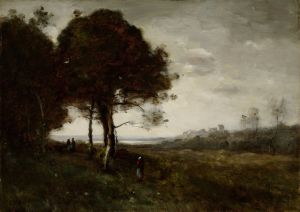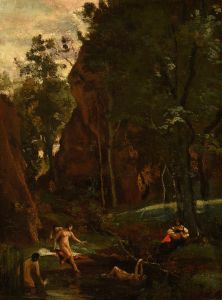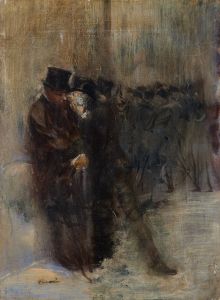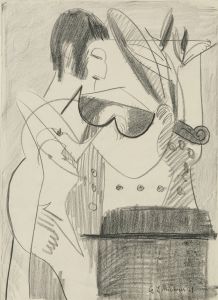
Dance under the Trees at the Edge of the Lake
A hand-painted replica of Jean-Baptiste-Camille Corot’s masterpiece Dance under the Trees at the Edge of the Lake, meticulously crafted by professional artists to capture the true essence of the original. Each piece is created with museum-quality canvas and rare mineral pigments, carefully painted by experienced artists with delicate brushstrokes and rich, layered colors to perfectly recreate the texture of the original artwork. Unlike machine-printed reproductions, this hand-painted version brings the painting to life, infused with the artist’s emotions and skill in every stroke. Whether for personal collection or home decoration, it instantly elevates the artistic atmosphere of any space.
Jean-Baptiste-Camille Corot was a pivotal figure in the landscape painting genre during the 19th century, known for his contributions to the Barbizon School and his influence on the Impressionist movement. One of his notable works is "Dance under the Trees at the Edge of the Lake" (French: "Danse sous les arbres au bord du lac"), which exemplifies his mastery in capturing the serene beauty of nature and the delicate interplay of light and shadow.
Corot was born on July 16, 1796, in Paris, France, and he developed a passion for art at an early age. He studied under the tutelage of Achille-Etna Michallon and Jean-Victor Bertin, who were prominent landscape painters of their time. Corot's early works were heavily influenced by the neoclassical tradition, but he gradually developed his unique style that blended realism with a lyrical, almost poetic sensibility.
"Dance under the Trees at the Edge of the Lake" is a testament to Corot's mature style, which often featured tranquil scenes of nature infused with a sense of timelessness and harmony. The painting depicts a group of figures dancing under the shade of trees by the edge of a lake. The composition is balanced and serene, with the figures gracefully integrated into the natural surroundings. Corot's use of soft, diffused light creates a dreamlike atmosphere, enhancing the idyllic quality of the scene.
One of the distinguishing features of Corot's work is his ability to convey the subtleties of light and atmosphere. In "Dance under the Trees at the Edge of the Lake," he employs a muted color palette dominated by greens, blues, and earthy tones, which adds to the painting's tranquil mood. The delicate brushwork and the careful attention to detail in the foliage and reflections on the water demonstrate Corot's technical skill and his deep appreciation for the natural world.
Corot's approach to landscape painting was innovative for his time. He often painted en plein air (outdoors), which allowed him to capture the changing effects of light and weather with greater immediacy and accuracy. This practice was relatively uncommon among his contemporaries, who typically worked in studios. Corot's plein air studies were instrumental in the development of his larger, more finished works, including "Dance under the Trees at the Edge of the Lake."
Throughout his career, Corot maintained a balance between his commercial success and his artistic integrity. He was highly respected by his peers and received numerous accolades, including the prestigious Legion of Honor. His influence extended beyond his lifetime, as he played a crucial role in bridging the gap between the classical landscape tradition and the emerging Impressionist movement.
"Dance under the Trees at the Edge of the Lake" is a prime example of Corot's ability to evoke a sense of peace and contemplation through his art. The painting invites viewers to immerse themselves in the beauty of the natural world and to appreciate the fleeting moments of joy and tranquility that it offers. Corot's legacy as a master landscape painter endures, and his works continue to be celebrated for their poetic charm and technical excellence.


















